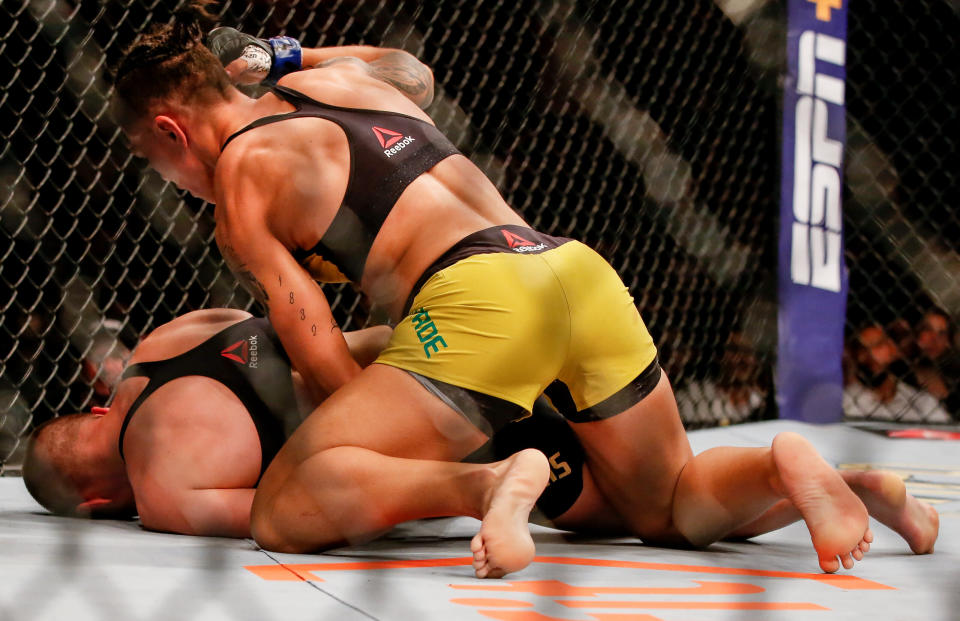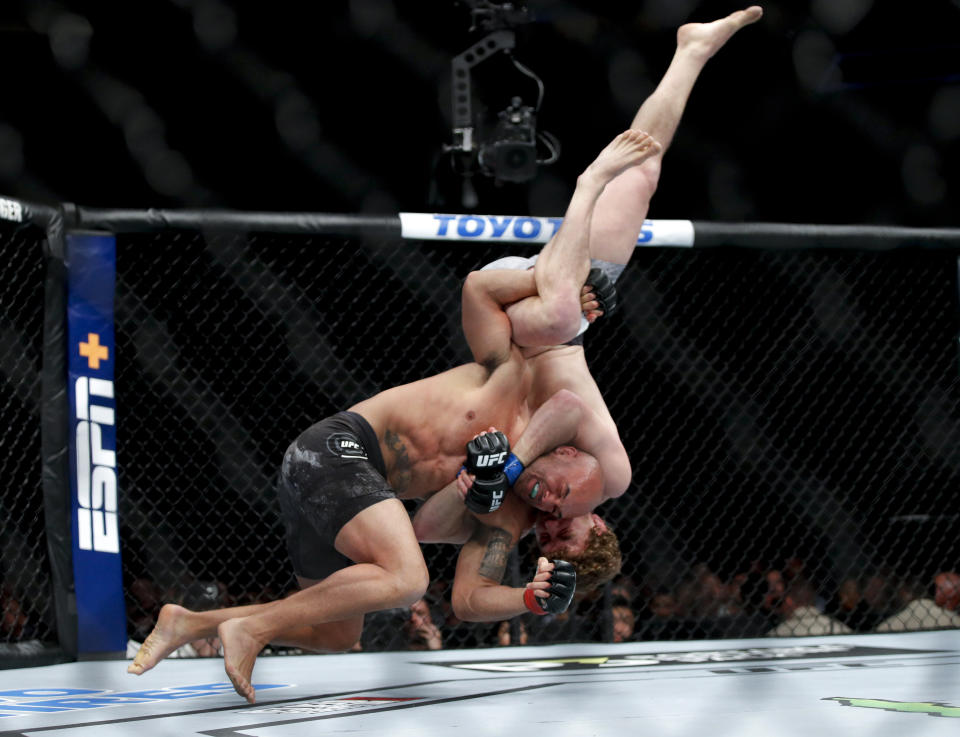What we don't talk about when we talk about mixed martial artists’ health

Why is it that we seem to usually talk about mixed martial artists’ health in terms of banning certain moves but not in terms of providing fighters with health care, salaries, pensions and job security? Instead, any earnest discussion of the topic should be welcome when the purpose is supporting athlete health.
So, in and of itself, the smattering of talk from fans and pundits alike in the days since Jessica Andrade’s shocking knockout of Rose Namajunas discussing if the violent takedown and resulting KO should be allowed in MMA isn’t bothersome.
Just to be clear, the move — executed in a UFC championship contest — was merely a high-crotch takedown that is common even at the prep level of amateur wrestling. But alright — some folks seem to want to debate whether that amateur wrestling move should be permitted at the highest levels of professional mixed martial arts.
Fine. Let’s also put aside for the moment that this level of controversy over slamming takedowns has not seemed to arise when the slammers and the slammed are male fighters, as was the case just two months ago at UFC 235 when Robbie Lawler brutalized Ben Askren with a spiking takedown (or when Randy Couture’s excellent head position on a takedown from the clinch resulted in a legal head butt/slam combination that scored him a title win against Gabriel Gonzaga in 2007, or when Quinton “Rampage” Jackson slammed and butted his way out of a triangle choke submission hold and to a victory over Ricardo Arona 15 years ago, or after Matt Hughes won his own UFC title back in 2002 by slamming Carlos Newton on his head, or any of the other scores of times slams have resulted in fights ending throughout MMA history).

The discussion is still conceivably coming from a good place, a place earnestly concerned with doing what we can to improve athlete health in a dangerous sport. Yet it is worth noting what often goes missing in such conversations about fighter health.
If we’re talking about moves that often get targeted in the modern era of MMA for possible expulsion, we can now add various slams to things like heel hooks and linear kicks to the knees. Even if we accept the premise that banning particular moves from MMA is what can really create better health outcomes in the long run for fighters, prohibiting those particular moves seems strange.
After all, what MMA moves really result in the most serious damage to the head and spine during training and competition, the most often? Punches to the head, of course.
What moves don’t ever seem to be on the chopping block? Punches to the head, of course.
Beyond that, it’s interesting that we as an MMA community typically talk about fighter health in these narrow terms — individual maneuvers that should or shouldn’t be allowed. I’m not sure why that is the case, but I do know we miss a whole heck of a lot when we so limit our discourse.
What is usually missing from discussions of fighter health in that context are examinations of other structural and economic concerns that have a broad and deep effect on athlete health.
When the only time we discuss fighter health outcomes is when we’re shocked by a particular move used in a fight like UFC 237’s main event, we miss opportunities to discuss more fundamental ways to take care of MMA athletes, in the long run.
We seem to discuss moves being illegal/legal for fighter health more than we talk about the fact that UFC fighters don’t have year-round health insurance, or that they aren’t treated as employees and so don’t have any of the many rights guaranteed to employees by U.S. law. The fact that UFC fighters don’t receive salaries, or aren’t eligible for pensions, and have little power in match booking and so often fight injured, and more frequently than they might otherwise, and often fight for longer in their life than they should, all to make ends meet, has much more of an impact on fighter health than whether or not someone is allowed to kick their knee in a straight line, or take them down to the mat the same way an amateur wrestler is allowed to.
Concern for the health of the athletes who lay their bodies and minds on the line for our entertainment is a positive good. It’s time we begin to dig a bit deeper with our concern, however, instead of leaving underlying structures of inequality and insecurity that make the sport especially dangerous unexamined and in place while we quibble over moves most of us don’t really understand.
More from Yahoo Sports:

 Yahoo Sports
Yahoo Sports 